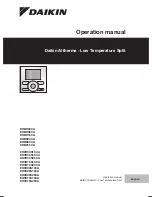
14
After-heating control with solid fuel boiler: '-SFH '
Some of the pre-programmed solar heating systems offer an after-heating control with a solid fuel
boiler as an add-on. This function requires a temperature sensor in the upper part of the storage tank,
a temperature sensor on the solid fuel boiler and a heating circuit pump.
In the event the temperature falls below the set value (parameter: 'solid fuel heat. ON') in the upper
part of the storage tank, the control device automatically checks if the solid fuel boiler has reached the
set minimum temperature 'boiler temp. min.' at the boiler sensor. Only in this case is the heating circuit
pump switched on. When the storage tank reaches its set switch-off temperature (parameter: 'solid
fuel heat. OFF'), the heating circuit pump is switched off again. During the charging process the
control device continuously checks the temperatures of the solid fuel boiler as well. If the boiler
exceeds its set temperature limit (parameter: 'boiler temp. min.' and 'boiler temp. max.') the heating
circuit pump will also be switched off.
Charging Zone Control: '-CZ ' (only with systems with plate heat exchanger)
Some of the pre-programmed solar heating systems provide a charging zone control as an add-on to
utilize a simple layer in the storage tank. This function requires an additional temperature sensor in the
storage tank (in the additional charging inlet area) and a 3-way valve.
While the 'Basic' control always charges the storage tank at the top (this can, under certain
circumstances, mix an existing layer), the temperature in the middle part of the storage tank is also
factored in by this control system. As soon as the charging temperature (measured on the secondary
side of the plate heat exchanger) is at least 2 Kelvin above the temperature in the middle part of the
storage tank, the regulator starts to charge the upper part of the storage tank. If the charge current
only provides temperatures lower than or the same as the 'middle of the storage tank‘ temperature, the
charging current is diverted back to the middle storage tank area. The objective of the control device,
however, is the required charging temperature (parameter: ‘charging setpoint'). To prevent the after-
heating function from being inadvertently activated, systems with after-heating (-AH) or external after-
heating as well as the after-heating parameters 'after-heating OFF or 'AH extern. threshold ' are also
factored in by the switch valve’s control.
Systems with after-heating (-AH) can only be switched to the upper charging zone, when the charging
temperature is at least 2 Kelvin above the switching parameter 'after-heating OFF'. If the charging
current only returns temperatures lower than or the same as this parameter, the charging current is
diverted back to the middle storage tank area.
Systems with external after-heating (ext. AH) can only be switched to the upper charging zone when
the charging temperature is at least 3 Kelvin above the switching parameter 'AH extern. threshold '. If
the charging current only returns temperatures, which are 1K above this parameter, the charging
current is diverted back to the middle storage tank area.
Important: To prevent mixing the hot upper area, the 3-way valve must be installed so that the
middle storage tank area is charged in a de-energized state!
Radiation Sensor Control: '-R '
Some of the pre-programmed solar systems offer a solar circuit control through a radiation sensor as
an add-on. This function requires one radiation sensor for each collector array.
In comparison with the 'Basic' control, this control activates the solar pump depending on the
measured radiated power. If the solar radiation reaches the set threshold value (parameter: 'solar circ.
ON'), the solar pump is activated. To prevent possible cold water charging (e.g. when snow is on the
collector array), a bypass valve must be provided in the solar flow (advance) for systems with an
internal heat exchanger that only allows the storage tanks to be charged when a sufficiently high
temperature has been reached (solar advance temp. >= storage tank temp.+6K). The pump is first
deactivated as soon as the radiated power falls below the set value (parameter: 'solar circ. OFF') or
the storage tank or collector have reached their maximum/minimum temperatures.
Important: The speed control of the solar pump (if provided) refers to the differential temperature
between the solar flow (advance) (T1) and the lower storage tank temperature or to the absolute
temperature of the solar flow (advance) (T1) – depending on the speed control setting (see ch. 3.5).
For this reason temperature sensor T1 (and possibly also T2) are essential. T1 (T2) must therefore be
installed in the place described in the layout plan between the collector and storage tank!
Important: The control device can only work properly when the 3-way valve has been installed so that it is
in bypass position in a de-energized state!















































